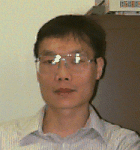Recent News
UNM Engineering names Prabhakar inaugural Cleve Moler and MathWorks Endowed Chair
October 3, 2025
Computer scientist wins Athlete of the Year Award for adaptive skiing technique
May 29, 2025
Hand and Machine Lab wins 2 awards at CHI conference
May 15, 2025
News Archives
Algorithmic Techniques for Biomedical Imaging Problems in Volumetric Images
April 22, 2011
- Date: Friday, April 22, 2011
- Time: 11:00 am — 11:50 am
- Place: Centennial Engineering Center Auditorium
Prof. Danny Z. Chen
Department of Computer Science and Engineering, University of Notre Dame
New image acquiring modalities and technologies continue to revolutionize the fields of biological studies and medical care today. Quantitative biomedical image analysis plays a critical role in solving many problems that are faced by biologists, cardiologists, orthopedists, radiologists, and other physicians on a daily basis. The increasing sizes of image data, especially in 3-D and higher dimensions, present a significant challenge to conventional approaches for automated biomedical image analysis, which has often been a difficult or even unrealistic process due to its time-consuming and labor-intensive characteristics.
Image segmentation, the problem of identifying objects of interest in volumetric image data, is a central problem in biomedical image analysis and computer-aided diagnosis. Robust, efficient, and accurate automated segmentation methods are highly desirable for numerous biomedical studies and applications. In this talk, we present effective image segmentation techniques for detecting biomedical objects in 3-D and higher dimensional images. The techniques are based on graph search frameworks or computational geometry paradigms. In comparison with most known segmentation methods for volumetric images that suffer from their inability to attain optimal segmentation or lengthy computation time, our techniques produce, in an efficient manner, segmentation of optimal quality with respect to general cost functions on a wide range of biomedical objects with complex topological structures. Segmentation results computed by our techniques on various biomedical objects (e.g., pulmonary fissures, airway trees, aorta, coronary vessels, retina, knee cartilage, blood clots, etc) and different imaging modalities are shown.
Bio: Prof. Danny Z. Chen received a B.S. degree in Computer Science and in Mathematics from the University of San Francisco, California, in 1985, and M.S. and Ph.D. degrees in Computer Science from Purdue University, West Lafayette, Indiana, in 1988 and 1992, respectively. He has been on the faculty of the Department of Computer Science and Engineering at the University of Notre Dame, Indiana since 1992, and is currently a Professor. Dr. Chen’s main research interests are in the areas of algorithm design, analysis, and implementation, computational geometry, computational medicine, parallel and distributed computing, data mining, and VLSI design. Dr. Chen received the NSF CAREER Award in 1996, the Kaneb Teaching Award of the Department of Computer Science and Engineering at the University of Notre Dame in 2004, and the James A. Burns, C.S.C. Award for Graduate Education of University of Notre Dame in 2009.

